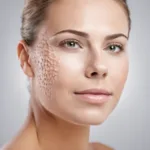17 January 2024
Discover the Benefits, Cost, and Efficacy of Microneedling
In the quest for youthful, radiant skin, individuals are constantly seeking innovative cosmetic procedures that can deliver remarkable results. One such procedure that has been gaining popularity is microneedling. This minimally invasive treatment uses tiny, sterilized needles to stimulate collagen production, resulting in smoother, firmer, and more toned skin. In this article, we will explore the ins and outs of microneedling, including its benefits, cost, efficacy, and how it compares to at-home rollers.
The Benefits of Microneedling
Microneedling has become increasingly popular due to its wide range of benefits. This procedure is known to improve the appearance of scars, including acne scars, fine lines, and wrinkles. It can also reduce the size of enlarged pores and address hyperpigmentation, resulting in a more even skin tone. Additionally, microneedling has shown promising results in improving skin elasticity and even promoting hair growth in individuals with alopecia. Compared to laser therapy, microneedling is a more affordable option and is considered safer for individuals with darker skin tones.
Targeted Areas for Microneedling
While microneedling is most commonly performed on the face, it can also be used to treat scarring and stretch marks on other parts of the body. Research has shown that microneedling combined with fillers can effectively reduce the appearance of stretch marks on the thighs and abdominal area. Dermatologists have also explored using microneedling to improve the appearance of scars and stretch marks in various areas of the body.
The Cost of Microneedling
The cost of microneedling can vary depending on the treatment needed. On average, a single session may cost anywhere from $200 to $800. The overall cost will depend on factors such as the size of the treatment area, the number of sessions required, and the rates of the professional performing the procedure. It’s important to note that microneedling is typically considered a cosmetic procedure and is not covered by insurance. However, some clinics may offer financing or payment plans to make the treatments more affordable.
How Microneedling Works
Microneedling works by creating micro-punctures in the skin using miniature, sterilized needles. These tiny injuries stimulate the skin’s natural healing process, resulting in the production of new collagen-rich tissue. This new tissue helps to improve the tone and texture of the skin, making it appear firmer and more youthful. Dermatologists may also recommend combining microneedling with other treatments such as topical serums, radiofrequency, or platelet-rich plasma to enhance the results.
Risks and Side Effects
Like any cosmetic procedure, microneedling carries some risks. Minor skin irritation and redness are common side effects immediately following the procedure, but these typically subside within a few days. However, more severe side effects such as bleeding, bruising, infection, or peeling may occur in rare cases and may require medical attention. Certain individuals may not be suitable candidates for microneedling, such as those with certain skin conditions, open wounds, active acne, recent radiation therapy, or a history of skin scars. Pregnant individuals should consult with their obstetrician or gynecologist before undergoing the procedure.
Preparing for Microneedling
To prepare for microneedling, it is often recommended to stop taking certain medications such as ibuprofen and acne treatments like Accutane. Dermatologists may also advise avoiding agents that can increase skin sensitivity, such as topical retinoids and exfoliants, prior to the procedure.
The Microneedling Procedure
The microneedling procedure typically begins with the application of a topical anesthetic to numb the skin. This is done approximately 45 minutes to 1 hour before the procedure. The actual microneedling process takes around 30 minutes, during which a doctor uses a pen-like tool with tiny, sterilized needles to create small pricks under the skin. These pricks are so small that they are barely noticeable. The tool is moved evenly across the skin to ensure even rejuvenation. After the microneedling session, a growth serum or calming treatment may be applied. The entire procedure usually lasts around 2 hours.
Post-Microneedling Care
After microneedling, minimal downtime is required, and most individuals can resume their regular activities immediately. However, some skin irritation and redness may be experienced for a few days. It is advisable to let the skin heal before applying makeup and to protect the skin from the sun by applying sunscreen. Dermatologists typically recommend waiting one week before exposing the skin to sunlight or harsh chemicals. Results from microneedling can be seen within a couple of weeks, but multiple sessions or complementary treatments may be necessary for optimal and long-lasting results.
Conclusion:
Microneedling has revolutionized the world of cosmetic procedures, offering individuals a safe and effective way to rejuvenate their skin. With its numerous benefits and minimal downtime, microneedling has become a popular choice for those seeking to improve the appearance of scars, wrinkles, and other skin concerns. While it may require multiple sessions and a long-term maintenance plan, the results are often worth the investment. As always, it is essential to consult with a board-certified dermatologist or cosmetic surgeon to determine if microneedling is the right option for your specific skin needs.



